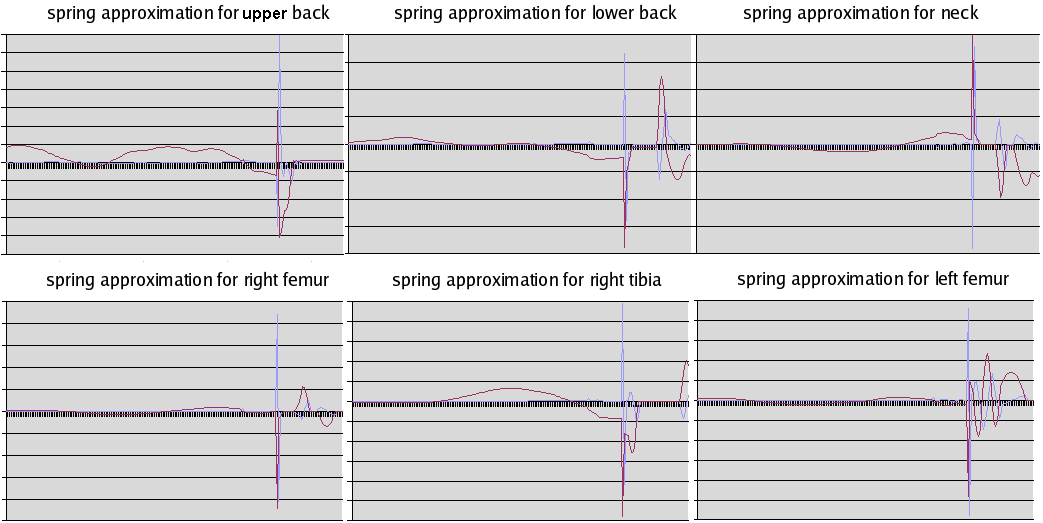

The smooth, rhythmic stretch and squashing motions seem to resemble an ossilating mass. So I studied the lengths of bones that did change during the sequence of Mickey's walk. The bone lengths that did change according to the rotoscoped motion are the following. The neck, upperback, lowerback, femur, tibia.

This makes sense since the bulk of Mickey's weight is in his head or body, which is supported by the spine and the legs. That weight drives the deformations of the bones.

I will try to fit a physical system to the changing bone lengths. First thing I will try is a simple single spring system.
This equation governs the single spring system. Where k is the spring stiffness coefficient and b is the damping coefficient. Since we have the displacement(d), velocity (v), and acceleration (a) data, we can use least-squares multiple regression to solve for the k and b for each of the bones that change lengths.
Once I solved for k and b, I compared m*a with the -k*d-b*v approximation. Below are the results, graphed with time (in frames) on the x axis and force (kg*m/frame^2) on the y axis.


One of the most noticable features is the spike that occurs at frame 159 in every graph. It is a bit suspicious considering the flatness of the curve before that point. This may be an artifact of the inaccuracy of extracting 3D information from 2D images. I will later perform this same procedure only on data after frame 159 and compare the resulting k and b.